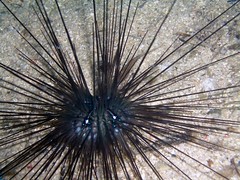The spines of the sea urchins are there for protection but that doesn’t stop the sea urchin from having enemies.
For instance, sea gulls love to grab them at low tide at pick away at them high upon the rocks. Crabs have a feast with the urchins by picking away at their spine to get to the inside flesh. Also, urchins that are found along the ocean floor are preyed upon by rays, sharks, seals, and even otters.
But we’ve only scratched the surface here. Check back often at www.beachchairscientist.com for more insight about your favorite beach discoveries.












What people are saying …